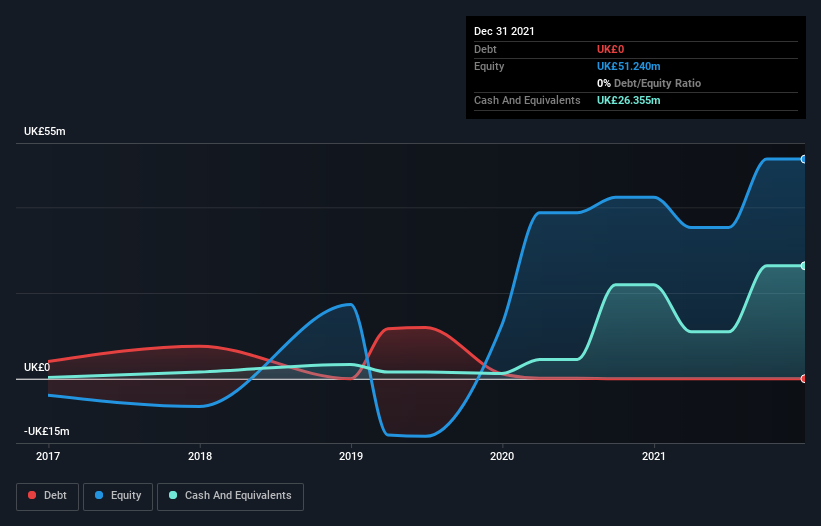Here's Why We're A Bit Worried About Invinity Energy Systems' (LON:IES) Cash Burn Situation
We can readily understand why investors are attracted to unprofitable companies. For example, although software-as-a-service business Salesforce.com lost money for years while it grew recurring revenue, if you held shares since 2005, you'd have done very well indeed. But while history lauds those rare successes, those that fail are often forgotten; who remembers Pets.com?
Given this risk, we thought we'd take a look at whether Invinity Energy Systems ( LON:IES ) shareholders should be worried about its cash burn. In this article, we define cash burn as its annual (negative) free cash flow, which is the amount of money a company spends each year to fund its growth. The first step is to compare its cash burn with its cash reserves, to give us its 'cash runway'.
Check out our latest analysis for Invinity Energy Systems
How Long Is Invinity Energy Systems' Cash Runway?
A cash runway is defined as the length of time it would take a company to run out of money if it kept spending at its current rate of cash burn. In December 2021, Invinity Energy Systems had UK£26m in cash, and was debt-free. Importantly, its cash burn was UK£24m over the trailing twelve months. That means it had a cash runway of around 13 months as of December 2021. While that cash runway isn't too concerning, sensible holders would be peering into the distance, and considering what happens if the company runs out of cash. Depicted below, you can see how its cash holdings have changed over time.
How Is Invinity Energy Systems' Cash Burn Changing Over Time?
In the last year, Invinity Energy Systems booked revenue of UK£3.2m. Given how low that operating leverage is, we think it's too early to put much weight on the revenue growth, so we'll focus on how the cash burn is changing, instead. The skyrocketing cash burn up 110% year on year certainly tests our nerves. That sort of spending growth rate can't continue for very long before it causes balance sheet weakness, generally speaking. While the past is always worth studying, it is the future that matters most of all. So you might want to take a peek at how much the company is expected to grow in the next few years .
How Hard Would It Be For Invinity Energy Systems To Raise More Cash For Growth?
While Invinity Energy Systems does have a solid cash runway, its cash burn trajectory may have some shareholders thinking ahead to when the company may need to raise more cash. Issuing new shares, or taking on debt, are the most common ways for a listed company to raise more money for its business. Commonly, a business will sell new shares in itself to raise cash and drive growth. We can compare a company's cash burn to its market capitalisation to get a sense for how many new shares a company would have to issue to fund one year's operations.
Invinity Energy Systems has a market capitalisation of UK£31m and burnt through UK£24m last year, which is 76% of the company's market value. That's very high expenditure relative to the company's size, suggesting it is an extremely high risk stock.
So, Should We Worry About Invinity Energy Systems' Cash Burn?
On this analysis of Invinity Energy Systems' cash burn, we think its cash runway was reassuring, while its cash burn relative to its market cap has us a bit worried. Considering all the measures mentioned in this report, we reckon that its cash burn is fairly risky, and if we held shares we'd be watching like a hawk for any deterioration. Separately, we looked at different risks affecting the company and spotted 6 warning signs for Invinity Energy Systems (of which 2 make us uncomfortable!) you should know about.
Of course Invinity Energy Systems may not be the best stock to buy . So you may wish to see this free collection of companies boasting high return on equity, or this list of stocks that insiders are buying .
Have feedback on this article? Concerned about the content? Get in touch with us directly. Alternatively, email editorial-team (at) simplywallst.com.
This article by Simply Wall St is general in nature. We provide commentary based on historical data and analyst forecasts only using an unbiased methodology and our articles are not intended to be financial advice. It does not constitute a recommendation to buy or sell any stock, and does not take account of your objectives, or your financial situation. We aim to bring you long-term focused analysis driven by fundamental data. Note that our analysis may not factor in the latest price-sensitive company announcements or qualitative material. Simply Wall St has no position in any stocks mentioned.
Join A Paid User Research Session
You’ll receive a US$30 Amazon Gift card for 1 hour of your time while helping us build better investing tools for the individual investors like yourself. Sign up here

 Yahoo Finance
Yahoo Finance 
